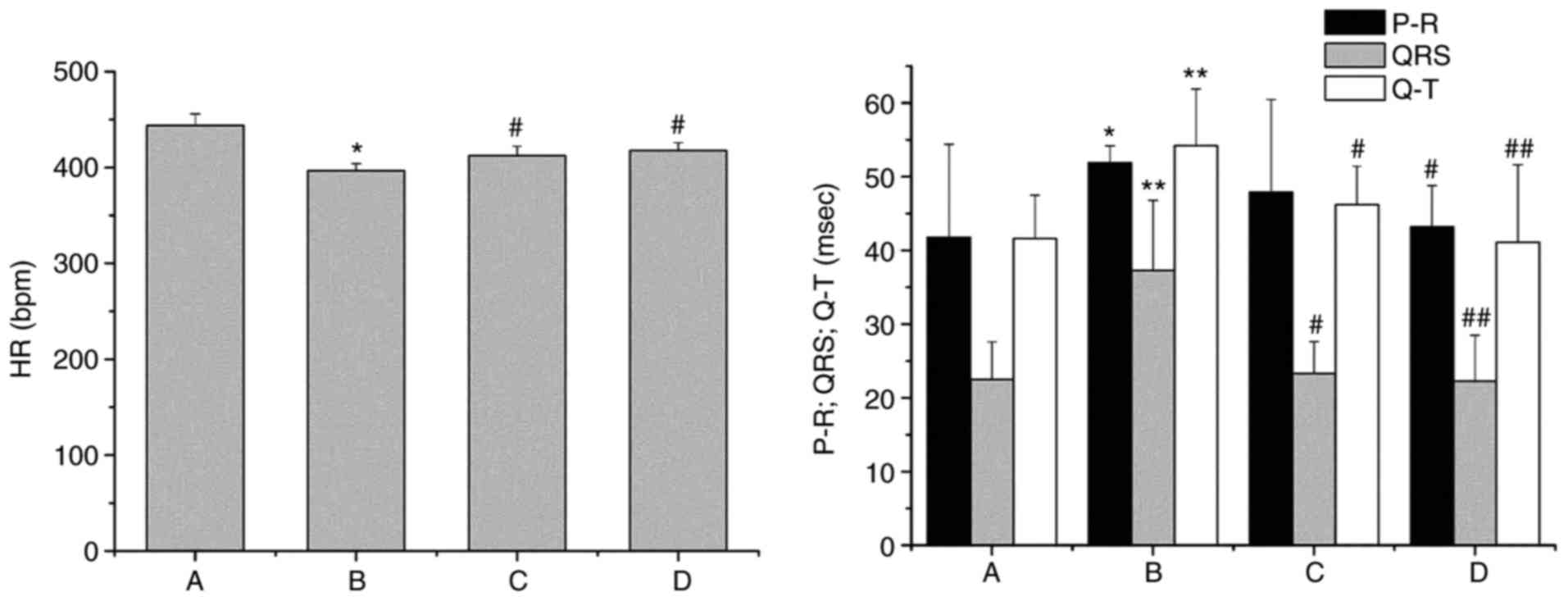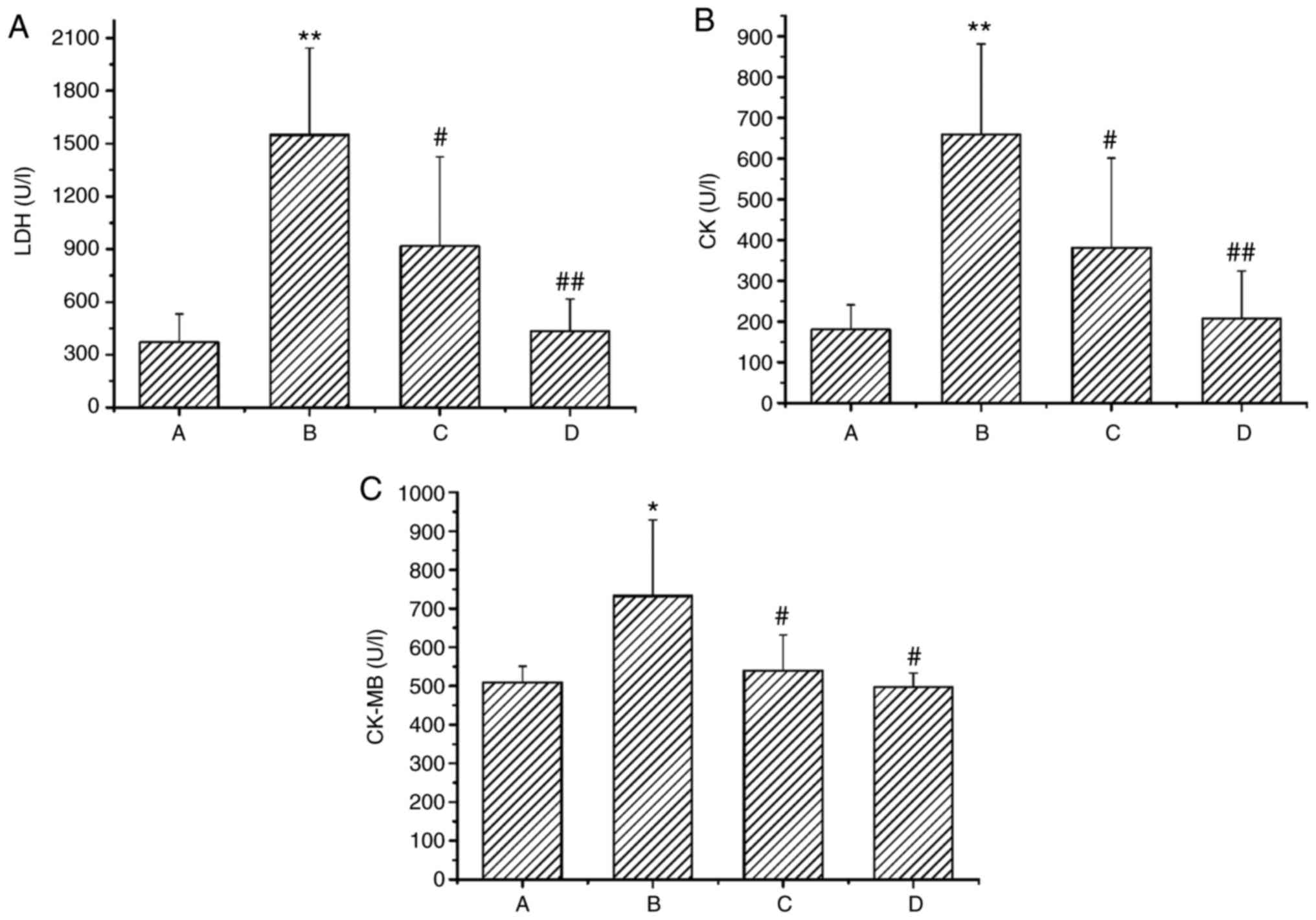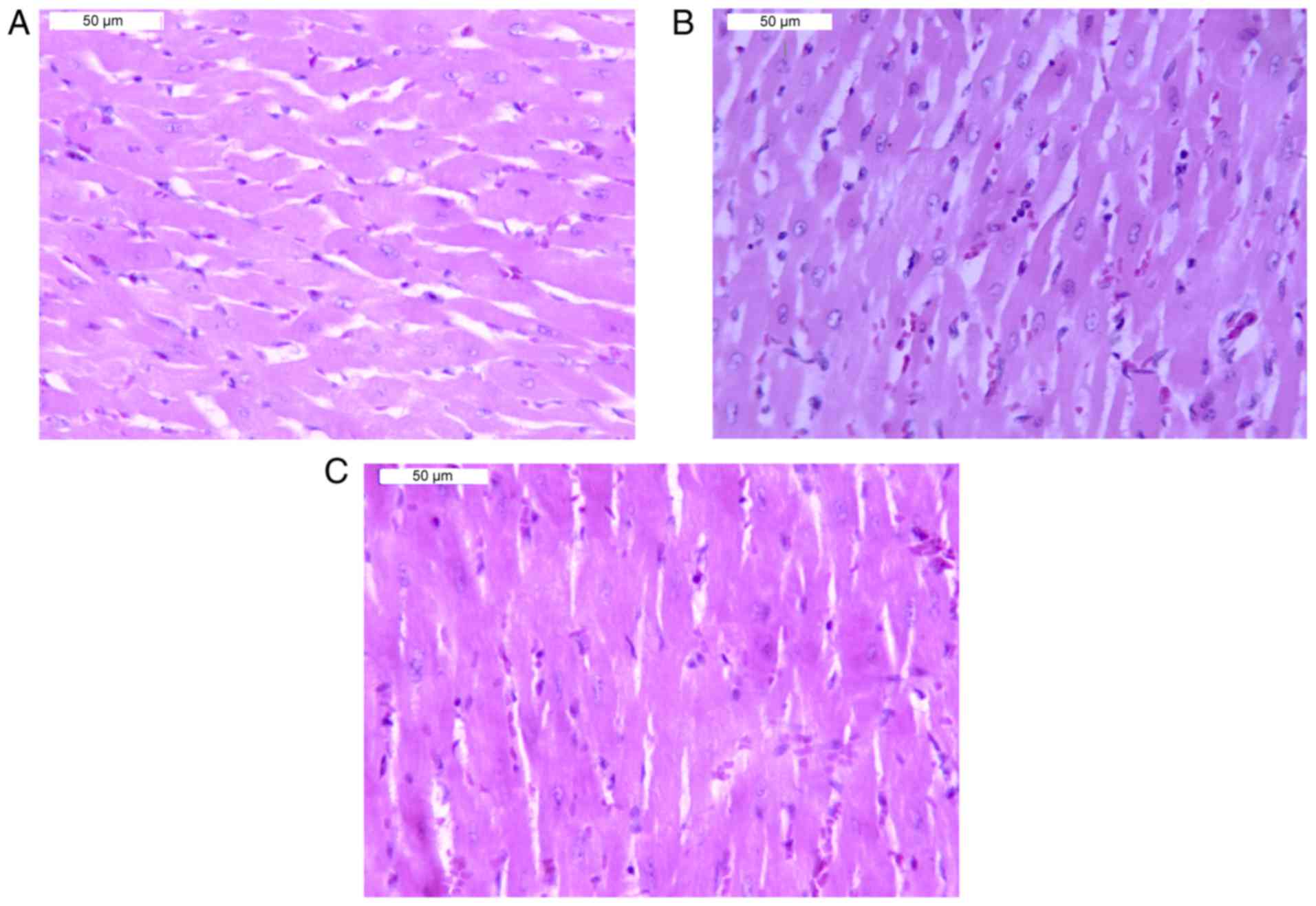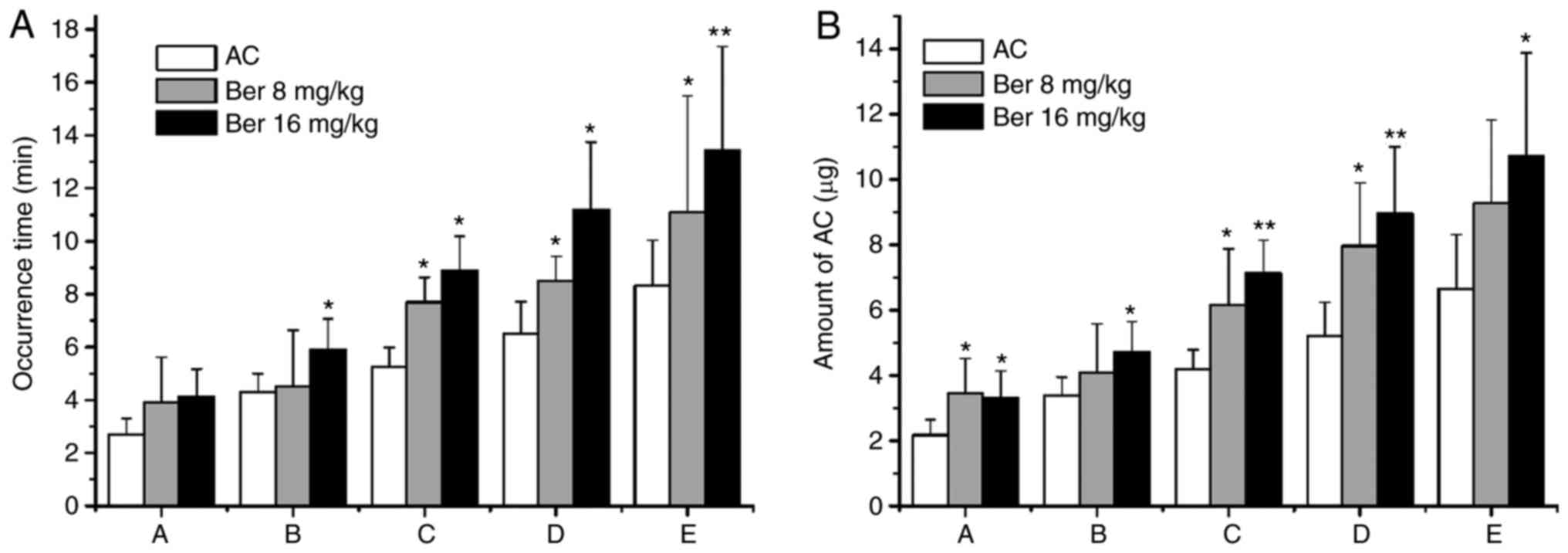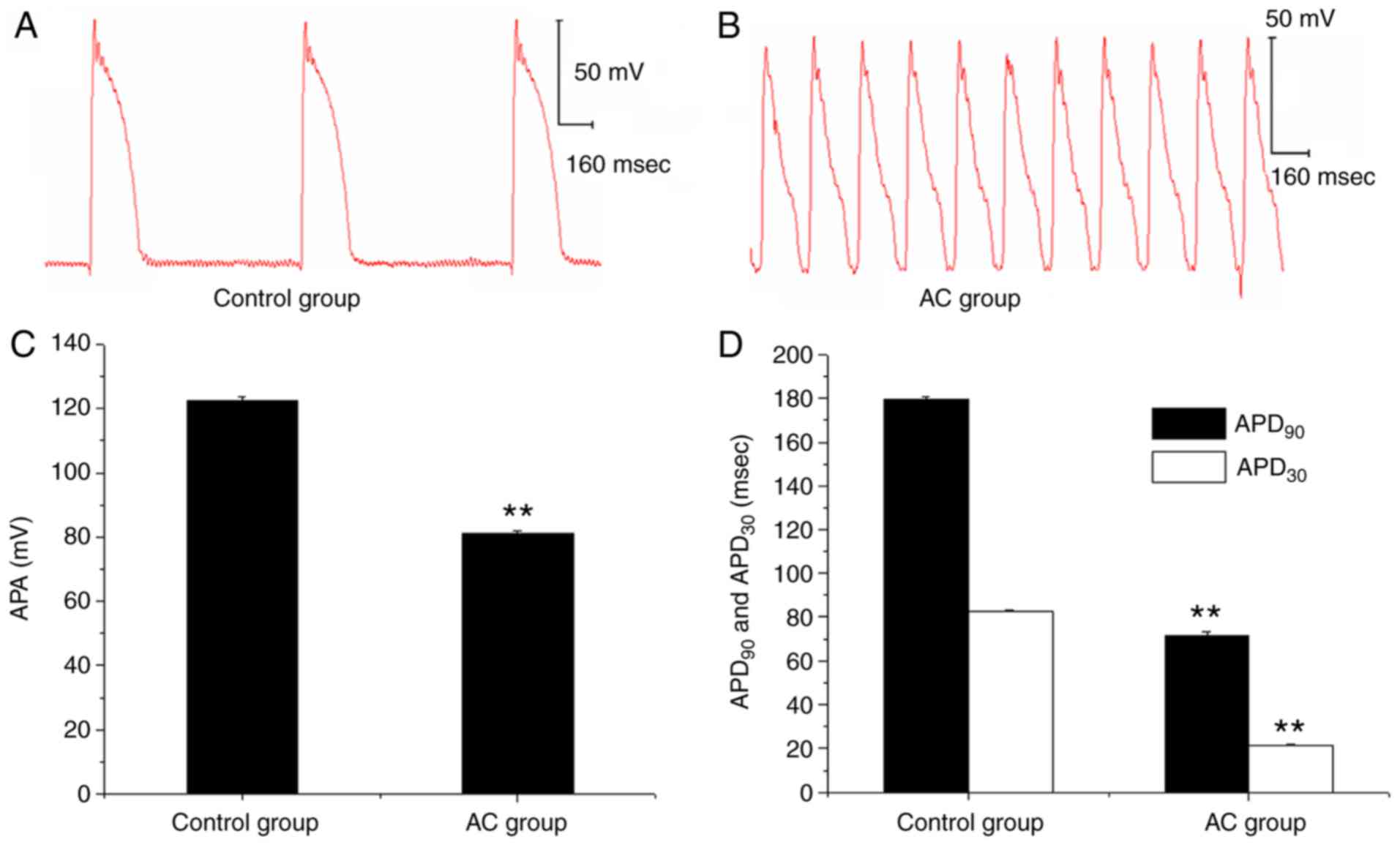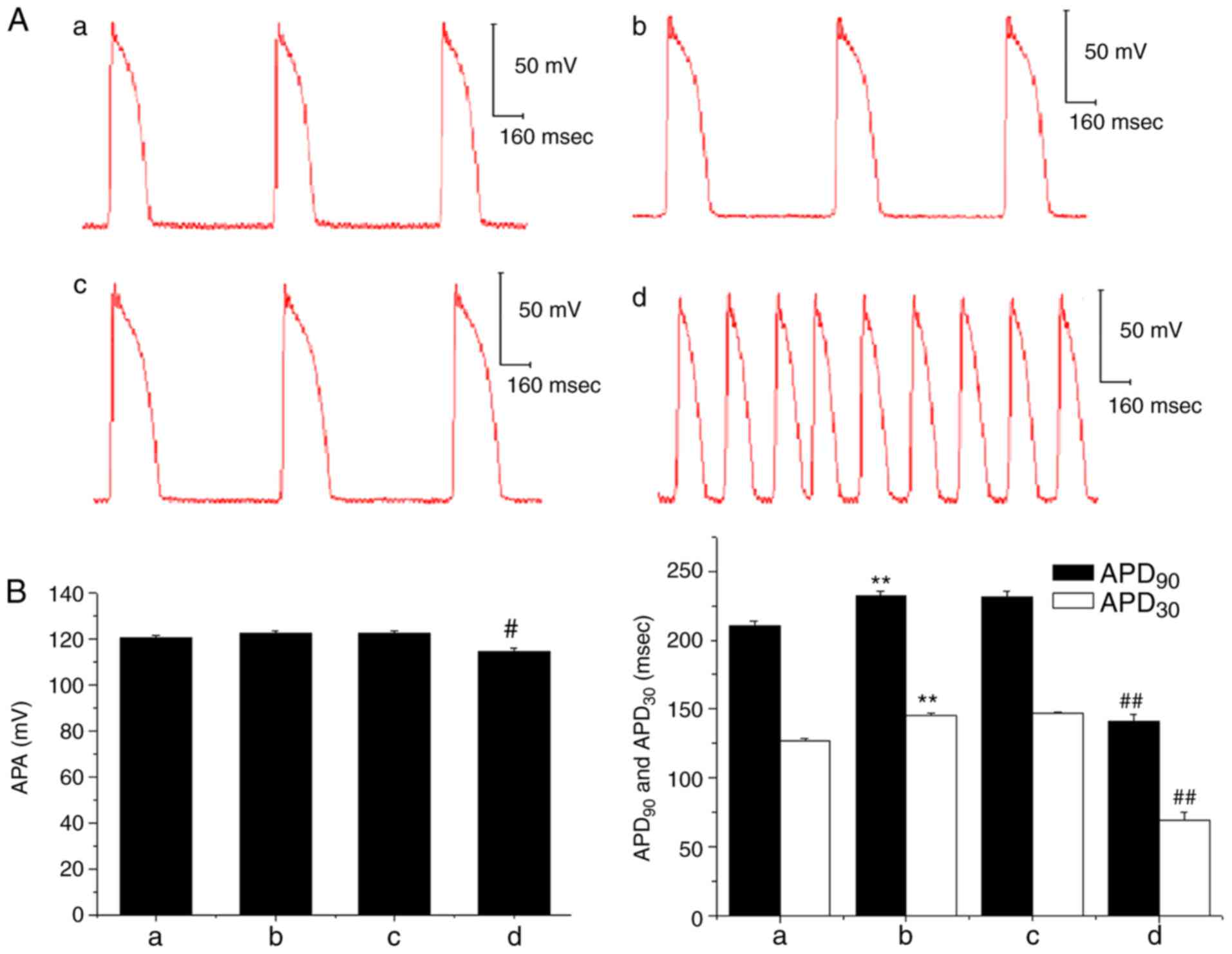|
1
|
Zhou G, Tang L, Zhou X, Wang T, Kou Z and
Wang Z: A review on phytochemistry and pharmacological activities
of the processed lateral root of Aconitum carmichaelii Debeaux. J
Ethnopharmacol. 160:173–193. 2015. View Article : Google Scholar : PubMed/NCBI
|
|
2
|
Lin CC, Phua DH, Deng JF and Yang CC:
Aconitine intoxication mimicking acute myocardial infarction. Hum
Exp Toxicol. 30:782–785. 2011. View Article : Google Scholar : PubMed/NCBI
|
|
3
|
Chan TY: Aconitum alkaloid content and the
high toxicity of aconite tincture. Forensic Sci Int. 222:1–3. 2012.
View Article : Google Scholar : PubMed/NCBI
|
|
4
|
Chan TY: Incidence and causes of aconitum
alkaloid poisoning in Hong Kong from 1989 to 2010. Phytother Res.
29:1107–1111. 2015. View
Article : Google Scholar : PubMed/NCBI
|
|
5
|
Sheth S, Tan EC, Tan HH and Tay L:
Herb-induced cardiotoxicity from accidental aconitine overdose.
Singapore Med J. 56:e116–e119. 2015. View Article : Google Scholar : PubMed/NCBI
|
|
6
|
Qiu M, Dong YH, Han F, Qin JM, Zhang HN,
Du JX, Hao XM and Yang YM: Influence of total flavonoids derived
from Choerospondias axillaris folium on aconitine-induced
antiarrhythmic action and hemodynamics in Wistar rats. J Toxicol
Environ Health A. 79:878–883. 2016. View Article : Google Scholar : PubMed/NCBI
|
|
7
|
Zhou YH, Piao XM, Liu X, Liang HH, Wang
LM, Xiong XH, Wang L, Lu YJ and Shan HL: Arrhythmogenesis toxicity
of aconitine is related to intracellular ca(2+) signals. Int J Med
Sci. 10:1242–1249. 2013. View Article : Google Scholar : PubMed/NCBI
|
|
8
|
Wang YJ, Chen BS, Lin MW, Lin AA, Peng H,
Sung RJ and Wu SN: Time-dependent block of ultrarapid-delayed
rectifier K+ currents by aconitine, a potent cardiotoxin, in
heart-derived H9c2 myoblasts and in neonatal rat ventricular
myocytes. Toxicol Sci. 106:454–463. 2008. View Article : Google Scholar : PubMed/NCBI
|
|
9
|
Wu J, Wang X, Chung YY, Koh CH, Liu Z, Guo
H, Yuan Q, Wang C, Su S and Wei H: L-type calcium channel
inhibition contributes to the proarrhythmic effects of aconitine in
human cardiomyocytes. PLoS One. 12:e01684352017. View Article : Google Scholar : PubMed/NCBI
|
|
10
|
Derosa G, Maffioli P and Cicero AF:
Berberine on metabolic and cardiovascular risk factors: An analysis
from preclinical evidences to clinical trials. Expert Opin Biol
Ther. 12:1113–1124. 2012. View Article : Google Scholar : PubMed/NCBI
|
|
11
|
Lau CW, Yao XQ, Chen ZY, Ko WH and Huang
Y: Cardiovascular actions of berberine. Cardiovasc Drug Rev.
19:234–244. 2001. View Article : Google Scholar : PubMed/NCBI
|
|
12
|
Mahmoudvand H, Ayatollahi Mousavi SA,
Sepahvand A, Sharififar F, Ezatpour B, Gorohi F, Saedi Dezaki E and
Jahanbakhsh S: Antifungal, antileishmanial and cytotoxicity
activities of various extracts of berberis vulgaris (Berberidaceae)
and its active principle berberine. ISRN Pharmacol.
2014:6024362014. View Article : Google Scholar : PubMed/NCBI
|
|
13
|
Li J, Pan Y, Kan M, Xiao X, Wang Y, Guan
F, Zhang X and Chen L: Hepatoprotective effects of berberine on
liver fibrosis via activation of AMP-activated protein kinase. Life
Sci. 98:24–30. 2014. View Article : Google Scholar : PubMed/NCBI
|
|
14
|
Ren LM, Zhuo YJ, Hao ZS, He HM, Lu HG and
Zhao D: Berberine improves neurogenic contractile response of
bladder detrusor muscle in streptozotocin-induced diabetic rats. J
Ethnopharmacol. 150:1128–1136. 2013. View Article : Google Scholar : PubMed/NCBI
|
|
15
|
Xiong C, Wu YZ, Zhang Y, Wu ZX, Chen XY,
Jiang P, Guo HC, Xie KR, Wang KX and Su SW: Protective effect of
berberine on acute cardiomyopathy associated with
doxorubicin-treatment. Oncol Lett. 15:5721–5729. 2018.PubMed/NCBI
|
|
16
|
Chen X, Zhang Y, Zhu Z, Liu H, Guo H,
Xiong C, Xie K, Zhang X and Su S: Protective effect of berberine on
doxorubicin-induced acute hepatorenal toxicity in rats. Mol Med
Rep. 13:3953–3960. 2016 May; View Article : Google Scholar : PubMed/NCBI
|
|
17
|
Kasahara Y, Itou T, Numazawa T and Wada A:
Aconitine analogues in wild Aconitum plants: Contents toxicity to
mice and decrease by boiling. Shokuhin Eiseigaku Zasshi.
54:364–369. 2013.(In Japanese). View Article : Google Scholar : PubMed/NCBI
|
|
18
|
Zhu L, Wu J, Zhao M, Song W, Qi X, Wang Y,
Lu L and Liu Z: Mdr1a plays a crucial role in regulating the
analgesic effect and toxicity of aconitine by altering its
pharmacokinetic characteristics. Toxicol Appl Pharmacol. 320:32–39.
2017. View Article : Google Scholar : PubMed/NCBI
|
|
19
|
Zhang T, Yang S and Du J: Protective
effects of berberine on isoproterenol-induced acute myocardial
ischemia in rats through regulating HMGB1-TLR4 axis. Evid Based
Complement Alternat Med. 2014:8497832014. View Article : Google Scholar : PubMed/NCBI
|
|
20
|
Wang LH, Li XL, Li Q, Fu Y, Yu HJ, Sun YQ,
Zhang L and Shan HL: Berberine alleviates ischemic arrhythmias via
recovering depressed I(to) and I(Ca) currents in diabetic rats.
Phytomedicine. 19:206–210. 2012. View Article : Google Scholar : PubMed/NCBI
|
|
21
|
Gautam PL, Luthra N, Kaur M, Singh J,
Wander GS, Tandon R and Gautam N: Evaluation of myocardial injury
using standard diagnostic tools and tissue doppler imaging in blunt
trauma chest. J Clin Diagn Res. 11:OC33–OC36. 2017.PubMed/NCBI
|
|
22
|
Ge YB, Jiang Y, Zhou H, Zheng M, Li J,
Huang XJ and Gao Y: Antitoxic effect of Veratrilla baillonii on the
acute toxicity in mice induced by Aconitum brachypodum, one of the
genus Aconitum. J Ethnopharmacol. 179:27–37. 2016. View Article : Google Scholar : PubMed/NCBI
|
|
23
|
Cai Y, Gao Y, Tan G, Wu S, Dong X, Lou Z,
Zhu Z and Chai Y: Myocardial lipidomics profiling delineate the
toxicity of traditional Chinese medicine Aconiti Lateralis radix
praeparata. J Ethnopharmacol. 147:349–356. 2013. View Article : Google Scholar : PubMed/NCBI
|
|
24
|
Ono T, Hayashida M, Tezuka A, Hayakawa H
and Ohno Y: Antagonistic effects of tetrodotoxin on
aconitine-induced cardiac toxicity. J Nippon Med Sch. 80:350–361.
2013. View Article : Google Scholar : PubMed/NCBI
|
|
25
|
Jung BC, Lee SH, Cho YK, Park HS, Kim YN,
Lee YS and Shin DG: Role of the alternans of action potential
duration and aconitine-induced arrhythmias in isolated rabbit
hearts. J Korean Med Sci. 26:1576–1581. 2011. View Article : Google Scholar : PubMed/NCBI
|
|
26
|
Wright SN: Comparison of
aconitine-modified human heart (hH1) and rat skeletal (mu1) muscle
Na+ channels: An important role for external
Na+ ions. J Physiol. 538:759–771. 2002. View Article : Google Scholar : PubMed/NCBI
|
|
27
|
Suzuki K, Matsumoto A, Nishida H, Reien Y,
Maruyama H and Nakaya H: Termination of aconitine-induced atrial
fibrillation by the KACh-channel blocker tertiapin: Underlying
electrophysiological mechanism. J Pharmacol Sci. 125:406–414. 2014.
View Article : Google Scholar : PubMed/NCBI
|
|
28
|
Mitamura M, Horie S, Sakaguchi M, Someya
A, Tsuchiya S, Van de Voorde J, Murayama T and Watanabe K:
Mesaconitine-induced relaxation in rat aorta: Involvement of Ca2+
influx and nitric-oxide synthase in the endothelium. Eur J
Pharmacol. 436:217–225. 2002. View Article : Google Scholar : PubMed/NCBI
|
|
29
|
Ducroq J: Sensitivity and specificity of
the in vitro guinea pig papillary muscle action potential duration
for the assessment of drug-induced torsades de pointes liability in
humans. Handb Exp Pharmacol. 229:205–219. 2015. View Article : Google Scholar : PubMed/NCBI
|
|
30
|
Coulson JM, Caparrotta TM and Thompson JP:
The management of ventricular dysrhythmia in aconite poisoning.
Clin Toxicol (Phila). 55:313–321. 2017. View Article : Google Scholar : PubMed/NCBI
|
|
31
|
Sun GB, Sun H, Meng XB, Hu J, Zhang Q, Liu
B, Wang M, Xu HB and Sun XB: Aconitine-induced Ca2+ overload causes
arrhythmia and triggers apoptosis through p38 MAPK signaling
pathway in rats. Toxicol Appl Pharmacol. 279:8–22. 2014. View Article : Google Scholar : PubMed/NCBI
|



